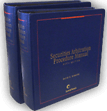Discovery Obligations in FINRA Arbitration
While most cases turn on “he said/she said” and the credibility of the parties, if you are able to support your assertions with documents, that goes a long way in turning the tide in your favor at an arbitration hearing. Claimants have the burden of proof but in reality, both sides have to prove their cases to the arbitrators.
Once a customer has filed the Statement of Claim and the firm has submitted its Answer, the most important part of preparing for your case is discovery. FINRA’s Discovery Guide[i] provides lists of documents that are to be produced by customers and brokerage firms in every case (and will be explained in subsequent blogs). In addition, FINRA Rule 12507 allows parties to make requests for case-specific documents. In our experience, properly navigating through the discovery process can be the difference between winning or losing your case. What follows are some pointers we give our clients:
Wear the “White Hat”
Discovery is not just the exchange of the documents. It’s also the parties’ first opportunity to interact with your arbitration panel Chair, who customarily decides all discovery issues in advance of the substantive hearings. Typically, this interaction takes place through motion practice seeking to compel your adversary to produce documents. It is crucial that you are compliant with your client’s required discovery obligations prior to the Chair’s involvement. Chairs are rarely sympathetic to parties who ignore their obligations. Failing to appear compliant could lead to unfavorable decisions during motion practice, leaving the Chair with the impression that your client is trying to hide something.
For this reason, we always implore our clients to be as forthcoming as possible during discovery. If your claim or defense is valid, you should have nothing to fear from producing documents. The more documents you can provide, the more support you’ll have for your arguments and the better you’ll appear in the eyes of the Chair and, ultimately, the full panel.
Stay on the Offensive
Another reason we instruct our clients to be as compliant as they can be during discovery is so we can demand the same level of compliance of our opponent. By carefully monitoring an opposing party’s compliance through the issuance of discovery deficiency letters, you keep them on the defensive.
Serving your opponents with discovery deficiency letters also documents their lack of compliance during discovery. Such letters can be used in support of a motion to compel your opponent to produce documents or to weaken an opponent’s claim that it is the party in need of documents. As long as you’re still wearing the “white hat” in terms of your own compliance, discovery deficiency letters can go a long way towards tarnishing your opponent in the eyes of the Chair.
Use Specific Requests to Strengthen Your Case
As mentioned in a previous blog, the Rules of Evidence don’t apply in FINRA arbitrations. Without such rules, Chairs typically allow for more latitude when it comes to discovery. For example, documents relating to past customer complaints or Acceptance, Waiver and Consent Orders (AWCs) from FINRA Enforcement (which would be barred from production in litigation), are frequently requested in securities arbitrations. As we were reminded by the Chair during a recent discovery teleconference, “Just because a document is ordered to be produced during discovery, doesn’t mean it will be allowed to be entered into evidence as an exhibit during the hearings.” While such documents may be excluded as hearing exhibits, they can prove to be valuable during discovery – as the basis for follow-up requests.
Documents produced as the result of an AWC may inform you of additional wrongdoing by your opponent, which could present a pattern of similar activity that the brokerage firm should have been alerted to. Showcasing a systemic problem with how a firm or broker does business can expose them both to additional claims, all of which increases your chance of prevailing at the hearings.
Conclusion
Discovery in securities arbitration may lack the formal Rules of Evidence, but that doesn’t make it any less important. Unlike litigation, where a judge enforces the rules and your case is determined by a jury, the arbitration Chair is both the judge and juror. This makes your own compliance with FINRA’s Rules and the Chair’s Orders even more important. In order to utilize the discovery process to your benefit, you have to be just as willing to produce documents as you are to demand them. In subsequent blogs, we will tell you the documents customers and brokerage firms are expected to produce in FINRA customer arbitrations.
[i] FINRA’s Discovery Guide can be viewed at
http://www.finra.org/web/groups/arbitrationmediation/@arbmed/@arbtors/documents/arbmed/p123494.pdf


